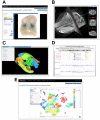FaceBase: A Community-Driven Hub for Data-Intensive Research
- PMID: 35912790
- PMCID: PMC9516628
- DOI: 10.1177/00220345221107905
FaceBase: A Community-Driven Hub for Data-Intensive Research
Abstract
The FaceBase Consortium, funded by the National Institute of Dental and Craniofacial Research of the National Institutes of Health, was established in 2009 with the recognition that dental and craniofacial research are increasingly data-intensive disciplines. Data sharing is critical for the validation and reproducibility of results as well as to enable reuse of data. In service of these goals, data ought to be FAIR: Findable, Accessible, Interoperable, and Reusable. The FaceBase data repository and educational resources exemplify the FAIR principles and support a broad user community including researchers in craniofacial development, molecular genetics, and genomics. FaceBase demonstrates that a model in which researchers "self-curate" their data can be successful and scalable. We present the results of the first 2.5 y of FaceBase's operations as an open community and summarize the data sets published during this period. We then describe a research highlight from work on the identification of regulatory networks and noncoding RNAs involved in cleft lip with/without cleft palate that both used and in turn contributed new findings to publicly available FaceBase resources. Collectively, FaceBase serves as a dynamic and continuously evolving resource to facilitate data-intensive research, enhance data reproducibility, and perform deep phenotyping across multiple species in dental and craniofacial research.
Keywords: craniofacial abnormalities; data curation; developmental biology; genomics; molecular genetics; morphogenesis.
Conflict of interest statement
Figures



References
-
- Chard K, D’Arcy M, Heavner B, Foster I, Kesselman C, Madduri R, Rodriguez A, Soliland-Reyes S, Goble C, Clark K, et al. 2016. I’ll take that to go: big data bags and minimal identifiers for exchange of large, complex datasets. IEEE International Conference on Big Data. New York (NY): IEEE. p. 319–328. doi: 10.1109/BigData.2016.7840618 - DOI
Publication types
MeSH terms
Grants and funding
LinkOut - more resources
Full Text Sources
Medical

